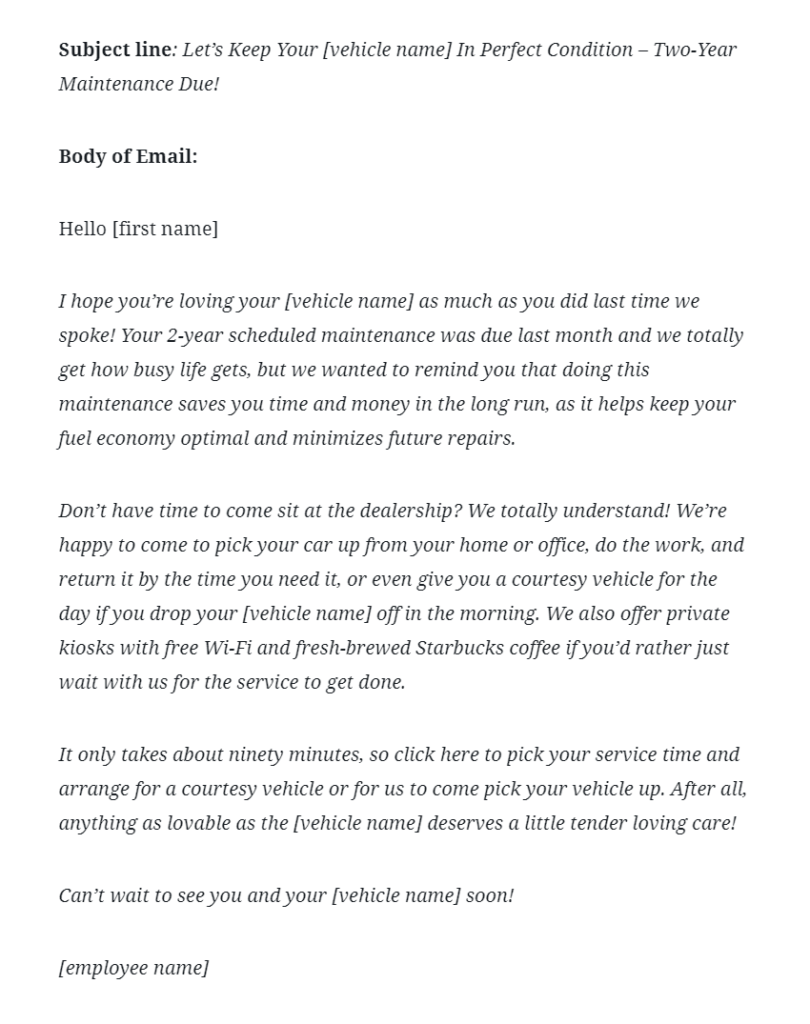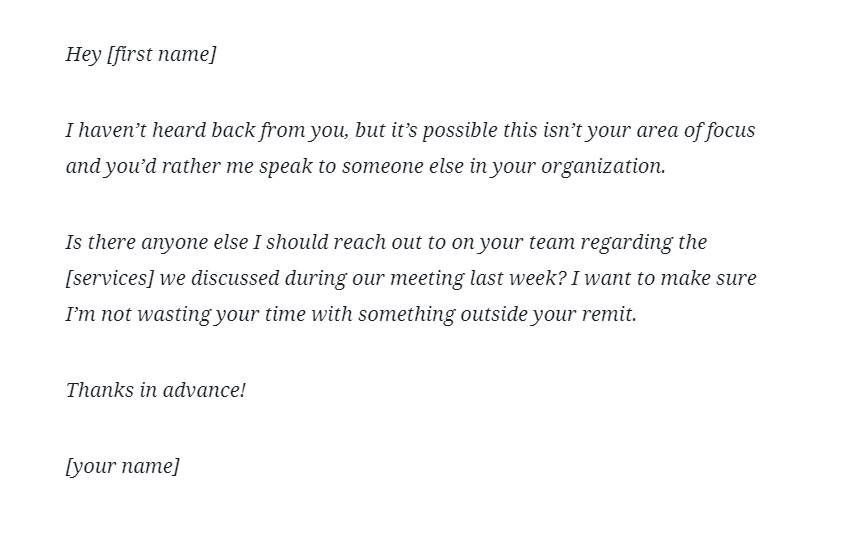How To Write Fantastic Follow-Ups
Whether you’re following up on a job interview, a big sales call, or any other interaction, sending a well-written and thoughtful follow-up email can help you stand out from the pack. In this post, we’ll discuss how to write effective follow-up emails, provide you with some reminder email samples, and discuss scenarios where a follow-up can make a big difference and bring you big results!
Depending on your use case, follow-up emails can be as simple as a single short note or as complex as a chain of emails for weeks. You can also use an easy-to-set email follow-up extension to schedule and send them out. Regardless, knowing how to write a gentle follow-up is a skill that will pay dividends for you in many areas of your life.
Why and When Do People Write A Follow-Up?
Follow-ups give an opportunity to share new information or reinforce shared information from previous interactions, show that the interaction was meaningful enough to warrant consideration, and keep your name or your company’s name, and the topics of your previous interactions, at the forefront of the other person’s mind.
Who uses follow-ups?
- Sales professionals – many prospects aren’t ready to buy at first; the concept of the buyer’s journey shows us that major decisions involve multiple ‘touchpoints’ before purchase. Well-crafted and informative follow-up emails can provide additional information and context, communicate the responsiveness of the company, and build relationships, plus provide additional opportunities to convert the sale.
- Customer service – The more effort companies make to keep customers informed, the more satisfied those customers usually are. Whether you’re doing warranty repairs or helping troubleshoot difficult issues, keeping the customer informed is key to managing expectations.
- Service providers – For contractors and other service providers, the reminder email is a powerful tool to help customers remember to set and keep appointments, be aware of other services offered by the provider, and do needed maintenance.
- Job seekers – Gentle follow-up emails can keep you in the limelight during a long interview process.
- Non-profits – Donors expect to be kept abreast of your activities, and the more you communicate your mission and activities, the more opportunities you have to “make the ask” for further donations. A clear and thought-out follow-up strategy can be a huge force multiplier for overworked non-profit staffers by automating much of this process and providing a channel for donors to keep in touch.
How often and how many follow-ups to send depends on the relationship and context of the interaction. There’s a fine line between being pushy and being persistent. The best follow-ups feel informative and like they have added to the previous interactions.
Best Practices of Follow-Up Emails
Follow-up emails, like any other type, are competing for mindshare with the hundreds of other emails received by the average American each day. There’s a lot of variables to consider, but here are some important best practices for follow-up emails.
- Use correct spelling and grammar
You don’t have to be an English whiz to write great emails; in-browser extensions such as Grammarly can suggest edits and highlight errors as you type, in your email or on any web form. Grammarly isn’t perfect; it’s easy to write the wrong word and Grammarly only catches it if it’s a clear error. No matter how strong your grammar game is, we always recommend having someone else proofread for you. - Have a strong subject line
Ideally, your subject line will catch the recipient’s eye, spark their memory as to your previous interactions, and signal that your email is worth reading. The average American receives 100 or more emails per day; a great subject line helps you stand out from the crowd.
- Personalize
Especially when you’re sending out many follow-ups, it’s important to avoid sending an obvious form letter. Use software tools to insert personal info such as names even when you’re sending out a large batch of automated follow-ups. Sales is about building relationships, and even though customers know you’ve got many other customers, they want to matter enough to get personal attention. - Research
If you’re following up with someone you don’t know well, don’t be afraid to use sites like LinkedIn to do some research. For example, when I worked for a non-profit, I was following up with a prospective new major donor and his LinkedIn showed we went to the same small college several states away. My next follow-up mentioned that I was also an alumnus of that school, which led to him calling my office to talk about our alma mater. The next week, he wrote a $50,000 check to my organization. - Formatting
When I open an email and see a giant wall of text, it goes to the bottom of my ‘to-read’ pile so I can answer the ones that are concise and quick to read. Stick to necessary information and break things up into easy 2-3 sentence paragraphs with ample white space. You’ll also want to use a consistent, easy-to-read font and a clear, simple, clean layout. - Tone
Follow-up emails are not usually the place to go for the hard sell. In many cases, gentle follow-ups and friendly reminders are far more effective. Without your presence and ability to use nonverbal cues, aggressive sales pitches can often come across poorly. However, there’s something to be said for being blunt and direct, especially if you’ve sent multiple emails that were ignored. - Content
Content is the most important part of your email, but without considering everything else on this list, many recipients won’t ever get to it. Keep it simple and concise. Don’t be afraid to show personality, but you should be mindful of length and show respect for their time. Don’t be afraid to keep it short and send another follow-up with more info a couple of days later to jog their memory again. - Call To Action
While we recommend a friendly and gentle tone to reminders and follow-ups, we still recommend incorporating a clear Call To Action in each email. It doesn’t always have to be a sale; sometimes you can simply ask them to check out your company’s website or an independent review of the product you’re trying to sell them. Focus on the benefit to the recipient and make your Call To Action something that is easy to say yes to.
Day-Off Gentle Followup Email Sample
Let’s say you’ve had an interview in the morning and you’re excited about the position, or even a sales call that went very well. One strategy that works very well is sending a quick, concise follow-up right before the close of business that evening. Often, your friendly thank-you is one of the last things the recipient sees before going home and gives them a positive view of you. If you met later in the day, send it shortly before the opening of business in the morning.

Note that the body of the email was to the point, but in the postscript, the author touches on a personal note that came up in their interview. The ability to forge relationships quickly is often important in new hire and this shows a capacity for relationship building that can only put you in a positive light.
Gentle Follow-Up Samples
Sending information or touching base every few days can keep you in the customer’s mind and provide additional opportunities to spark contact. Sometimes, it’s a good idea to provide additional context or information in your follow-up.
Let’s try a sample from a customer service representative reminding a customer of scheduled maintenance.

This email reminds customers who might have forgotten or missed earlier reminders, so it serves as a soft sell to convince them to get their maintenance done. It also provides info for the customer, such as the ability to get the work done without waiting for their car, and even sets expectations for how long the service takes.
Oops? Follow-up Email Sample
No one’s perfect, and sometimes information isn’t as correct as we’d like it to be. If you’ve sent gentle follow-up emails that were ignored, a good email to include in your planned cycle is one that acknowledges you may not be messaging the right person for a given decision. Try something like this:

Final Follow-Up Samples
One marketer I know finds that sending a final email that states something like ‘if you don’t have time to consider this, let me know so I stop wasting my time’ after multiple failed attempts to follow-up has a fairly high success rate, but also recommends exhausting gentler tactics before sending that type of message.
You can also inject a little humor into it. If you’ve been trying for a month or more to get a response, you don’t have a lot to lose by going against conventional logic, and sometimes it works.

This one’s a bit zany, but after six weeks of follow-ups, I figured a change-up might at least provoke a response. It worked; the recipient called me twenty minutes later and said he had a good laugh reading it. They had changed priorities and weren’t in the market for our services anymore, but something tells me he’ll remember that company if they are in the market for those services again.
We hope this guide on how to write reminders or follow-up emails has been helpful to you! We provided some business follow-up email samples that you’re welcome to use or adapt to fit your needs. Keep an eye out for more great posts on how to write a reminder email or any other type of email!


